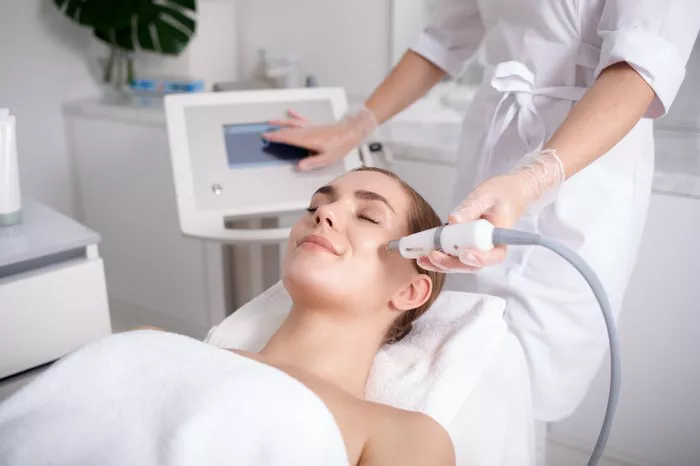Microdermabrasion is a popular non-invasive cosmetic procedure that helps rejuvenate the skin by exfoliating the top layer of dead skin cells. It’s effective for addressing various skin concerns, including fine lines, wrinkles, age spots, and acne scars. To perform microdermabrasion, professionals use specialized equipment that typically employs either crystals or a diamond-tipped wand to exfoliate the skin’s surface. Over time, questions may arise regarding the maintenance and longevity of this equipment. Does microdermabrasion equipment need to be replaced regularly? In this article, we will explore the factors that influence the lifespan of microdermabrasion equipment and provide insights into when replacement may be necessary.
Understanding Microdermabrasion Equipment
Microdermabrasion equipment is designed to provide controlled exfoliation of the skin’s outermost layer, known as the stratum corneum. There are two primary types of microdermabrasion machines:
Crystal Microdermabrasion: This type of equipment uses a stream of fine crystals, such as aluminum oxide or sodium bicarbonate, to exfoliate the skin. The crystals are projected onto the skin’s surface and simultaneously vacuumed away along with the exfoliated skin cells.
Diamond-tip Microdermabrasion: Instead of crystals, diamond-tip microdermabrasion machines utilize a wand with a diamond-encrusted tip to physically abrade and remove the top layer of skin. The exfoliated skin cells are then suctioned away.
Factors Influencing Microdermabrasion Equipment Longevity
Several factors play a role in determining how long microdermabrasion equipment can effectively and safely perform its function:
Machine Quality: The quality and durability of the microdermabrasion machine itself are crucial. High-quality equipment is designed to withstand extensive use and maintain its performance over time.
Frequency of Use: The frequency with which the equipment is used can significantly impact its lifespan. Machines that are used frequently, such as in a busy spa or clinic, may wear out more quickly than those used less often.
Maintenance: Proper maintenance is essential to extend the life of microdermabrasion equipment. Regular cleaning, servicing, and calibration of the machine ensure that it functions optimally.
Consumables: In the case of crystal microdermabrasion machines, the supply of crystals or other abrasive materials used during the procedure must be monitored and replaced as needed. Using low-quality or contaminated crystals can affect the equipment’s performance.
Technician Skill: The skill and technique of the technician operating the equipment can impact its longevity. Inexperienced operators may inadvertently cause excessive wear and tear.
When Should Microdermabrasion Equipment Be Replaced?
The decision to replace microdermabrasion equipment depends on several factors, including its condition, performance, and the demands of the facility where it is used. Here are some key considerations:
Performance Decline: When microdermabrasion equipment begins to show a noticeable decline in performance, such as reduced suction power or uneven abrasion, it may be time to consider replacement. Diminished performance can lead to less effective treatments and client dissatisfaction.
Malfunctions: Frequent breakdowns, malfunctions, or equipment errors that cannot be adequately resolved through servicing may indicate that it’s time to invest in a new machine. Malfunctions can disrupt client appointments and negatively impact the reputation of the facility.
Outdated Technology: Advancements in microdermabrasion technology continue to occur. If a facility is using outdated equipment that lacks modern features or capabilities, it may be worthwhile to upgrade to a more advanced system to stay competitive and offer the best treatments to clients.
Loss of Warranty: Once a microdermabrasion machine is no longer covered by its warranty, facilities may consider replacing it, especially if it has a history of requiring frequent repairs.
Client Safety: Above all, client safety is paramount. If there are concerns about the safety of using the equipment due to wear and tear, it is crucial to prioritize client well-being and replace the machine as needed.
Cost-Benefit Analysis: Facilities should conduct a cost-benefit analysis to determine if ongoing repairs and maintenance costs outweigh the investment in new equipment. In some cases, consistent repairs and servicing can become more expensive than purchasing a new machine.
Conclusion
Microdermabrasion equipment is a valuable tool in the field of skincare and aesthetics. While the lifespan of this equipment can vary based on factors such as quality, maintenance, and frequency of use, it is essential to monitor its performance and condition regularly. When microdermabrasion equipment begins to exhibit signs of decline in performance, frequent malfunctions, or safety concerns, it may be time to consider replacement.
Ultimately, the decision to replace microdermabrasion equipment should prioritize client safety and the delivery of effective treatments. Upgrading to modern equipment with advanced features can enhance the quality of services provided and maintain client satisfaction, contributing to the success of aesthetic facilities offering microdermabrasion treatments.


